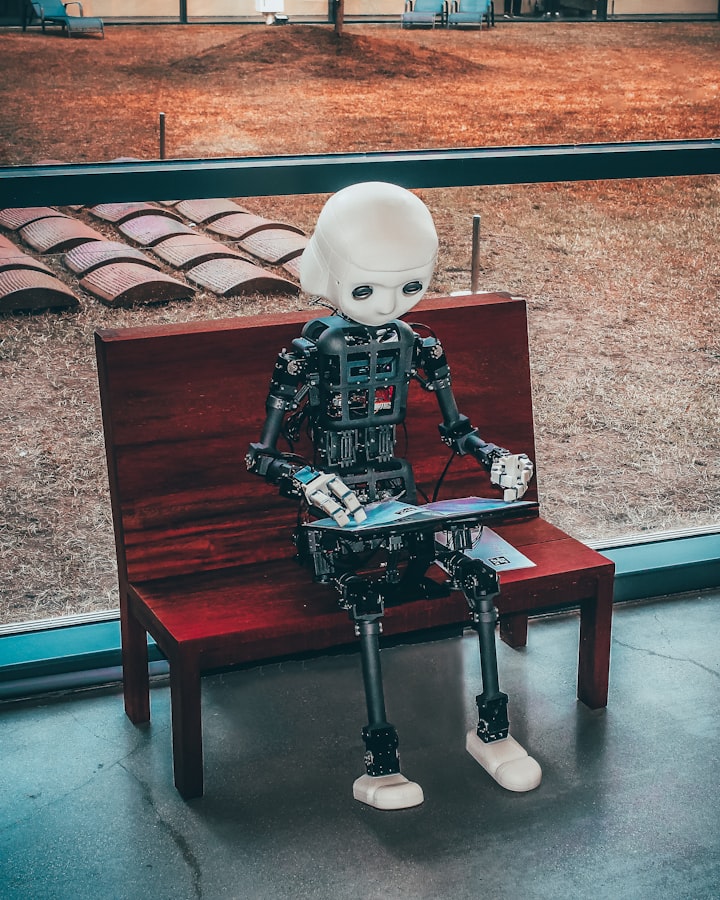"Exploring the Advancements and Applications of Artificial Intelligence (AI)"
"From Machine Learning and Computer Vision to Robotics and Healthcare: Understanding the Impact of AI on Our Lives"

Artificial Intelligence, or AI, is one of the most rapidly growing and important fields in technology today. It is the branch of computer science that deals with the creation of intelligent machines that can perform tasks that typically require human intelligence, such as visual perception, speech recognition, decision-making, and language understanding. The field of AI has come a long way in recent years and is being applied in an increasing number of industries and applications.
One of the most significant areas of AI development is machine learning. Machine learning is a type of AI that allows computers to learn from data and improve their performance without being explicitly programmed. It is based on the idea that machines can learn from experience, just like humans do. There are several types of machine learning, including supervised learning, unsupervised learning, and reinforcement learning.
Supervised learning is the most common type of machine learning and is used in applications such as image and speech recognition, natural language processing, and predictive analytics. It involves training a machine learning model on a labeled dataset, where the desired output is known. The model can then be used to make predictions on new, unseen data.
Unsupervised learning is another type of machine learning and is used to find patterns and relationships in data without any prior knowledge of the desired output. It is commonly used for tasks such as clustering and dimensionality reduction.
Reinforcement learning is a type of machine learning that is based on the idea of training a machine by rewarding it for making good decisions and penalizing it for making bad decisions. It is commonly used in robotics, gaming, and other applications where the machine needs to make decisions based on its environment.
Another area of AI development is natural language processing (NLP), which is the ability of machines to understand and generate human language. NLP is used in a wide range of applications, such as chatbots, voice assistants, and machine translation. NLP technology is becoming more advanced and is able to understand context and tone, making it more human-like in its interactions with people.
AI is also being applied in the field of robotics, which includes the development of self-driving cars, drones, and robots for manufacturing and healthcare. Self-driving cars, for example, use AI to navigate roads, avoid obstacles, and make decisions about traffic. Drones and robots are also being used in a variety of industries to improve efficiency and safety.
AI is also being used in healthcare to improve patient outcomes and make medical treatments more efficient. AI-powered medical imaging software can help doctors identify diseases and conditions such as cancer more quickly and accurately. AI-powered robots are being used in surgeries to assist surgeons and make procedures less invasive.
AI is also being used in the field of finance to analyze financial data, identify patterns, and make predictions. For example, AI-powered systems can be used to detect fraudulent financial transactions, make stock market predictions, and assist with portfolio management.
However, with the increasing use of AI, there are also concerns about the impact it may have on society. One concern is the potential for AI to replace human jobs, leading to mass unemployment. Another concern is the potential for AI to be used for malicious purposes, such as cyberattacks or creating autonomous weapons.
In order to address these concerns, it is important to ensure that AI is developed and used ethically. This includes ensuring that AI systems are transparent and accountable, and that their decisions can be explained and understood. It also includes ensuring that AI systems are not biased, and that the data used to train them is diverse and representative.
In conclusion, Artificial Intelligence is a rapidly growing field that has the potential to change the way we live and work. From machine learning and natural language processing to
robotics and healthcare, AI is being applied in a wide range of industries and applications. It is making tasks that were once thought to be impossible for machines to perform, possible, and is helping to improve efficiency, safety, and accuracy in many areas.
One of the most exciting areas of AI development is computer vision, which is the ability of machines to interpret visual information from the world, such as images and videos. Computer vision is being used in a wide range of applications, such as self-driving cars, security cameras, and medical imaging. It allows machines to understand and make sense of visual data in a way that is similar to how humans do.
Another area of AI development is deep learning, which is a type of machine learning that uses neural networks to model complex patterns in data. Deep learning is based on the idea that machines can learn to represent data in a way that is similar to the way the brain represents information. It is used in a wide range of applications, such as image and speech recognition, natural language processing, and predictive analytics.
AI is also being used in the field of internet of things (IoT), which is the network of devices, vehicles, and home appliances that are connected to the internet and can collect and share data. AI is used in IoT to analyze and make sense of the data generated by these devices, and to make decisions about how to control them. For example, AI-powered thermostats can learn about a person's schedule and adjust the temperature in the house accordingly.
AI is also being used in the field of cybersecurity, which is the practice of protecting networks, devices, and data from unauthorized access, use, disclosure, disruption, modification, or destruction. AI is used in cybersecurity to detect





Comments
There are no comments for this story
Be the first to respond and start the conversation.